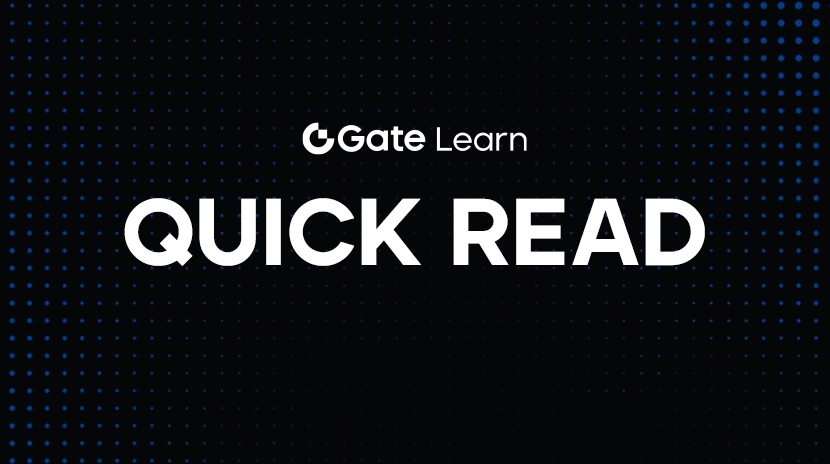Search result of INTER

Intermediate
A Comprehensive Guide to Stride (STRD)
Stride is a liquid staking protocol operating in the Cosmos ecosystem, which is built on the Tendermint consensus mechanism. Utilizing the Cosmos SDK, Stride leverages features such as Inter-Blockchain Communication (IBC) and inter-chain queries, enabling it to facilitate liquid staking across multiple chains.
12/2/2024, 3:23:19 PM

Advanced
Shared sequencers for Starknet and Madara app chains
The article explains how shared sequencers increase inter-chain composability and efficiency, and facilitate decentralization.
12/25/2023, 10:55:19 AM

Beginner
Ubyx secures $10 million in seed funding to create a new standard for stablecoin exchange.
This round of financing was led by Galaxy Ventures, with participation from well-known institutions such as Coinbase Ventures. Ubyx will reduce friction in usage and promote large-scale adoption through an inter-institutional stablecoin clearing network.
7/11/2025, 9:36:33 AM

Intermediate
Trusted Autonomy: Why Human-Machine Teams Will Run on Crypto Networks
This article, written by Jan Liphardt, Associate Professor of Bioengineering at Stanford University, delves into the challenges and opportunities of integrating autonomous intelligent robots into human society, as well as the key role blockchain technology plays in this process. The article analyzes the potential applications of intelligent robots in fields such as education, healthcare, and defense, discussing how technologies like decentralized governance and smart contracts support human-robot collaboration and inter-robot collaboration, driving the rapid development of autonomous intelligent robots.
1/21/2025, 7:36:59 AM

Intermediate
What Is Composable Finance?
Find out how Composable Finance aims to improve the De-Fi industry through composability.
12/9/2024, 5:51:43 AM

Intermediate
MT Capital Research Report: Chainflip, a new competitor in the native cross-chain exchange market
This article explores how the decentralized cross-chain liquidity network represented by Chainflip will promote the unification of DeFi liquidity.
1/6/2024, 5:55:38 PM

Beginner
Exploring Polymer: The Key to Seamless Blockchain Interoperability
Discover the transformative potential of Polymer Labs in blockchain interoperability in this article. Explore how their cutting-edge technology is bridging networks and shaping the future of DeFi and NFTs.
4/24/2024, 5:59:50 AM

Advanced
Explore Purpose-Built Blockchain
In this article, we will examine the methodologies pursued by blockchain infrastructure in the past and present, and discuss the future direction that blockchain infrastructure should take. We will also explore which form of blockchain is most suitable for this division of labor structure.
12/2/2024, 4:32:14 AM

Intermediate
Exploring the Re-Staking Potential of EigenLayer
This article provides a detailed overview of EigenLayer, an innovative platform aiming to expand decentralized trust boundaries through re-staking and Liquid Re-Staking Tokens (LRT). It explores how EigenLayer utilizes a dual-token model and the concept of intersubjectivity to address blockchain governance and decentralized trust challenges. EigenLayer allows validators to use ETH securing Ethereum to protect Active Validation Services (AVS), thereby enhancing capital efficiency and creating a more interconnected and resource-efficient ecosystem. The article also discusses EigenLayer's dual-token model, fork mechanism, and their adaptation within the broader crypto ecosystem.
9/9/2024, 4:12:55 PM

Beginner
Understanding HYPER: The Core Token Behind the Cross-Chain Interoperability Protocol
HYPER is the native Token of the cross-chain protocol Hyperlane, supporting validation, staking, and governance. This article will quickly introduce you to the uses, value, and market performance of HYPER.
7/14/2025, 6:39:08 AM

Beginner
ChainLink (LINK) Price Prediction: Price Trends and Influencing Factors
The application layer of Chainlink continues to expand, from the RWA field to the DeFi field, and then to cross-chain ecosystems and CBDC frameworks. These dynamics not only strengthen the value support of LINK but also inject long-term growth momentum into its price.
5/27/2025, 6:56:21 AM

Beginner
In-depth Analysis of Cosmos: Building Blockchain Internet Infrastructure for Interchain Connectivity
Lens Protocol is a decentralized social graph protocol built on the Polygon Blockchain, aimed at allowing users to truly own their digital identity, content, and social relationships.
7/14/2025, 9:21:15 AM

Intermediate
What is Phantasma (Soul)?
Explore Phantasma's blockchain evolution—governance, dual tokens, NFTs, and more. Uncover the future of decentralized applications and blockchain technology.
2/21/2024, 7:00:48 AM

Beginner
What is Octopus Network?
Discover Octopus network, a blockchain platform using AppChains for improved scalability, efficiency, and secure decentralized apps.
6/6/2024, 2:27:01 AM

Intermediate
Layer3: Multi-Chain Architecture and Tech Expansion
There is heated debate about Layer3, with some highlighting the applications of on-chain arbitrage and Zero-Knowledge (ZK) technology, while others focus on the AVS staking and reward-punishment mechanisms of Eigenlayer. The significance of Layer3's expansion lies in its autonomous characteristics, which can achieve interoperability and a trusted environment between multiple chains through ZK technology and reward-punishment economic mechanisms. Therefore, Layer3 should be customized based on application scenario needs, rather than simply being stacked and extended.
4/17/2024, 1:57:04 AM
Your Gateway to Crypto World, Subscribe to Gate for A New Perspective
